Keeping the Hot Side Hot
House, Renovation ·The insulation of the house was lacking, to say the least. After the previous owners had expanded into the attic, there was no insulation on the roof at all, and the only insulation on the exterior walls was some foam board added under the siding when the siding was bolted onto the house in the 80s.
Because we kept the third floor as usable space, we planned to use spray foam to insulate the roof. You can see in the following shots that we insulated the A-Frame part of the third floor using spray foam.
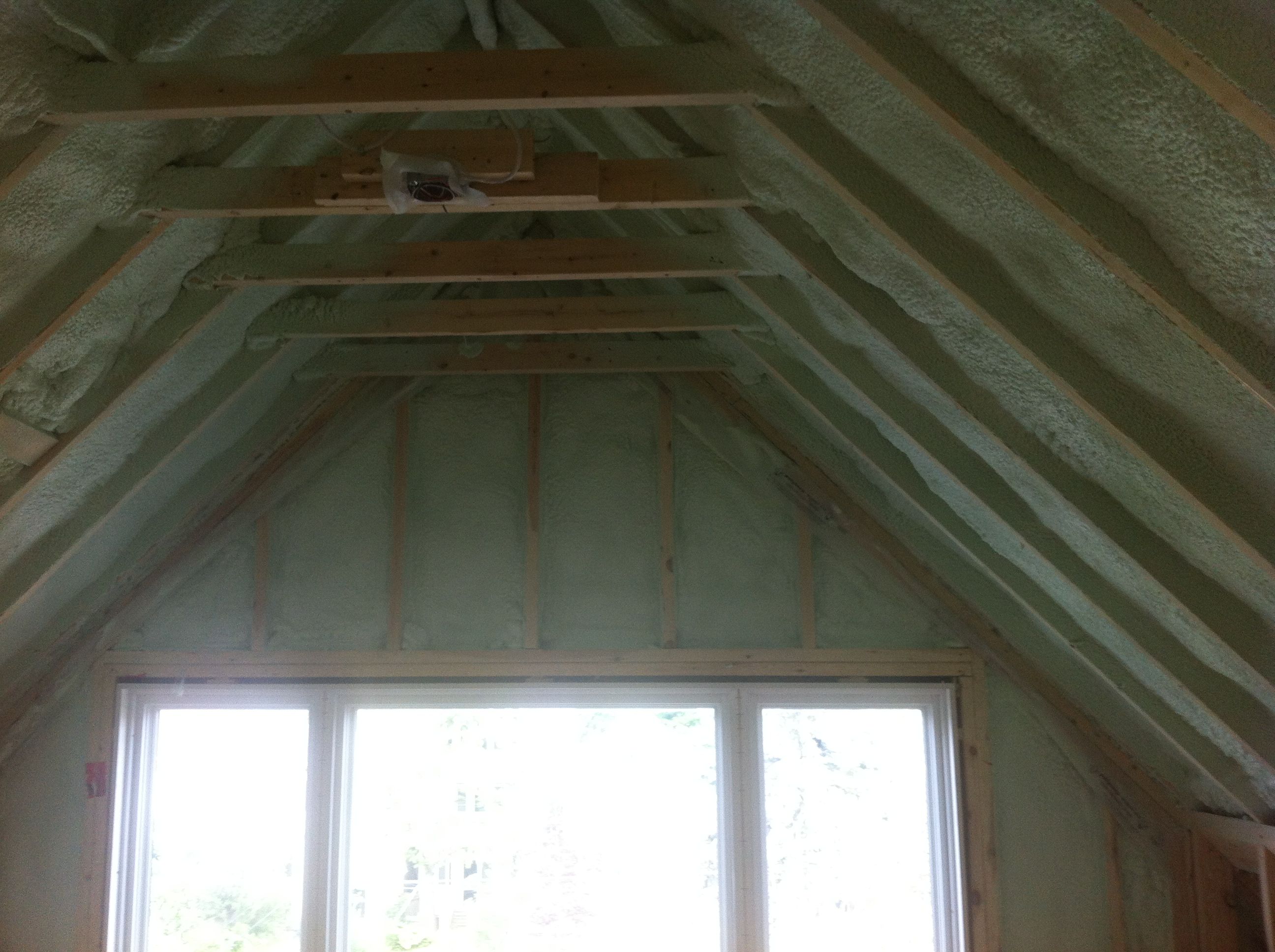
Not shown are the dormers, but they also have spray foam, so that the roof is entirely sealed with spray foam insulation to the correct R level for the roof. This is a huge improvement over the previous setup.
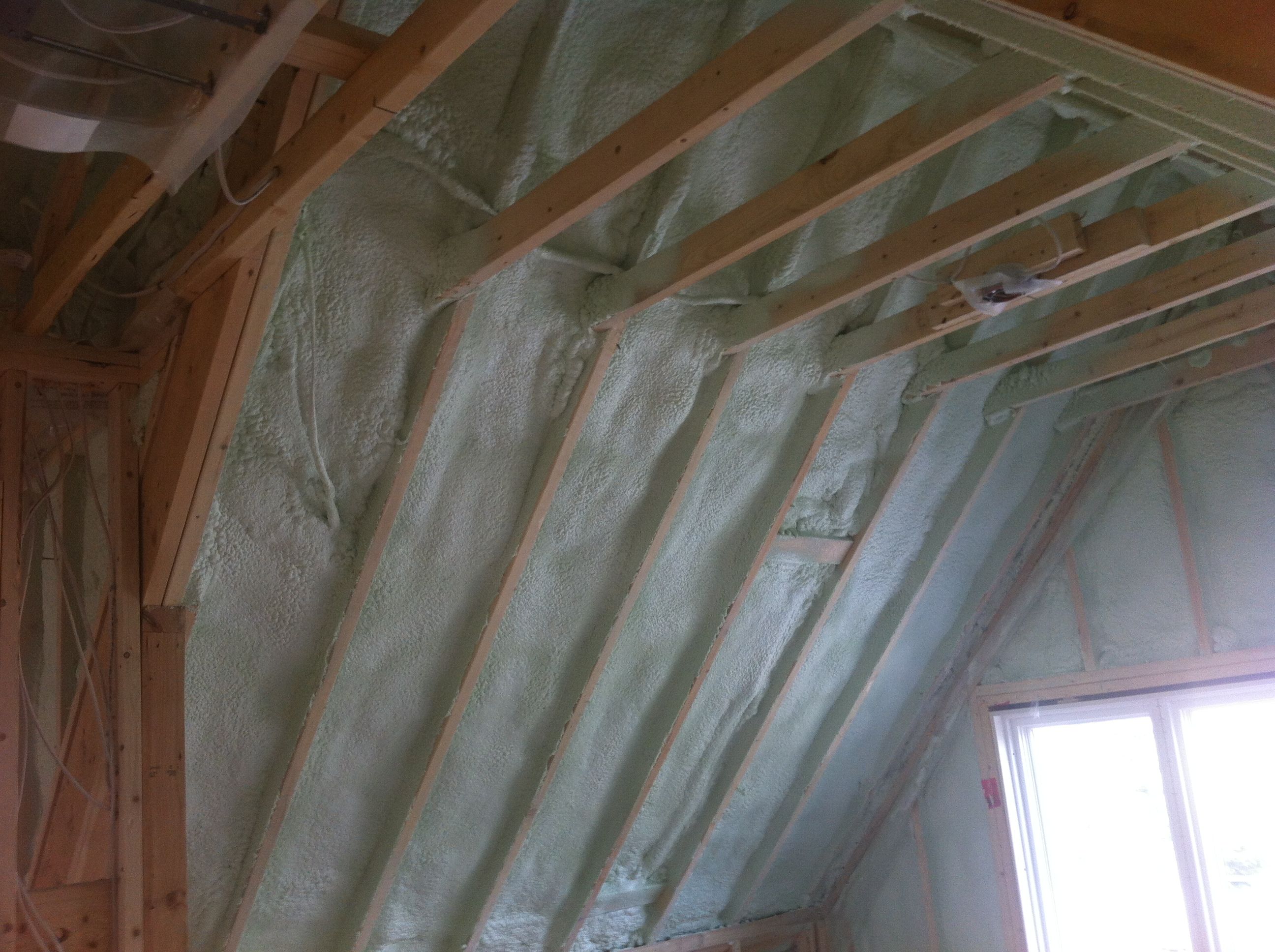
We also wanted to use spray foam in all the walls, and we were on budget to do so. Spray foam provides a tighter seal for the envelope of the house, and reduces drafts. However, we ran afoul of the building code.
Older houses in Toronto are built much closer to the property line than is allowed for new construction. The buildings are grandfathered into the rules, but you still need to meet fire code ratings on walls that are too close to the property line (and thus close to your neighbours). The North/South exterior walls are too close to our neighbours, and hence we have to use fire-rated insulation in those walls. The spray foam doesn’t cut it, and so we had to use Roxul and vapour barrier. As well, those north/south walls will have to have 5/8” fire-rated drywall instead of the standard 1/2”.
The south wall can be seen in this photo. The bulk of the insulation is spray foam, where allowed, and the empty areas are to be filled with Roxul and vapour barrier.
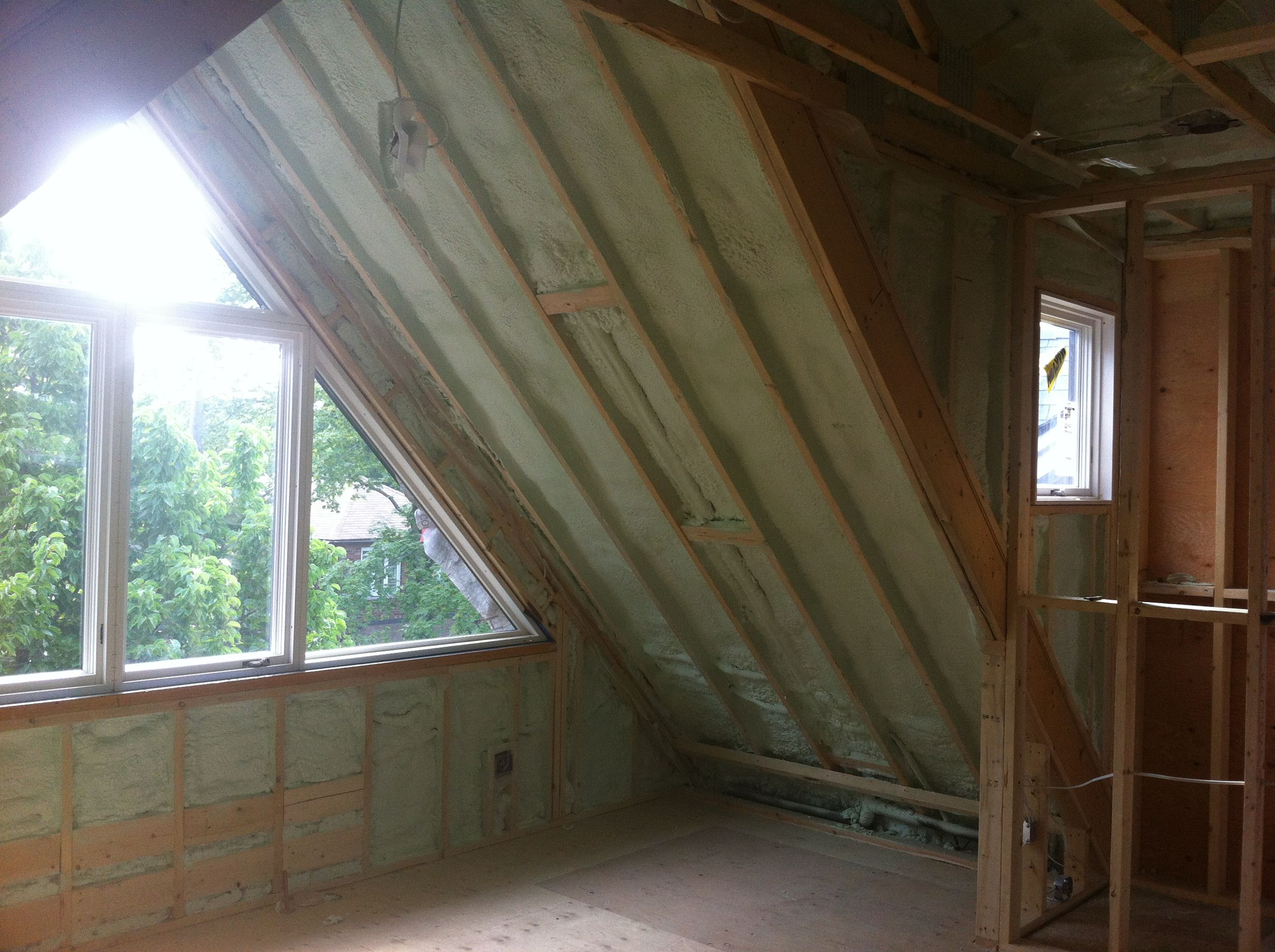
The East/West walls, since they are not near to the neighbours, can be filled with spray foam, like the east wall of the kitchen.
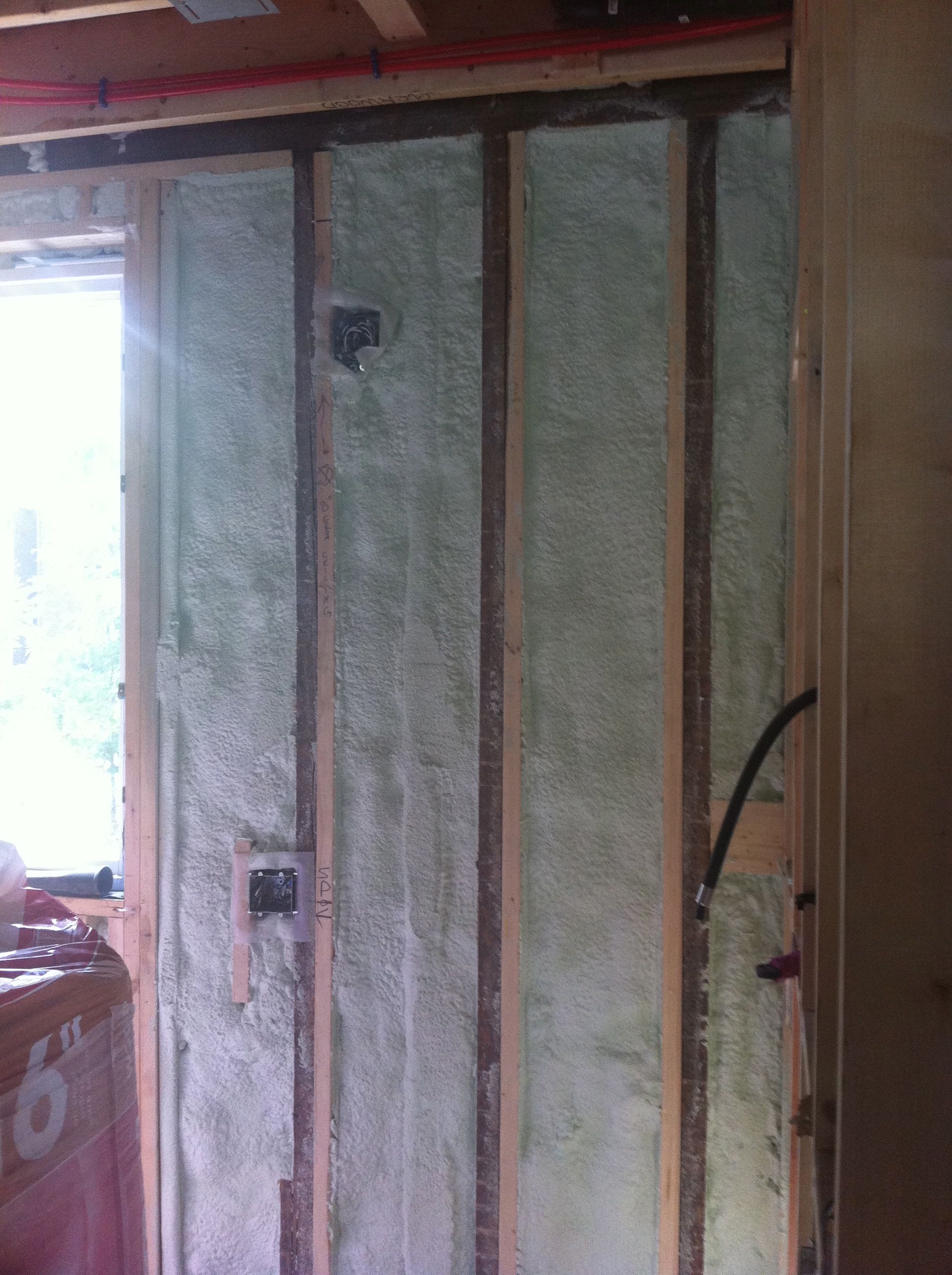
And the west wall in the basement. This also has the advantage that the hot water for the radiators can be run in this exterior wall because it’s correctly insulated.
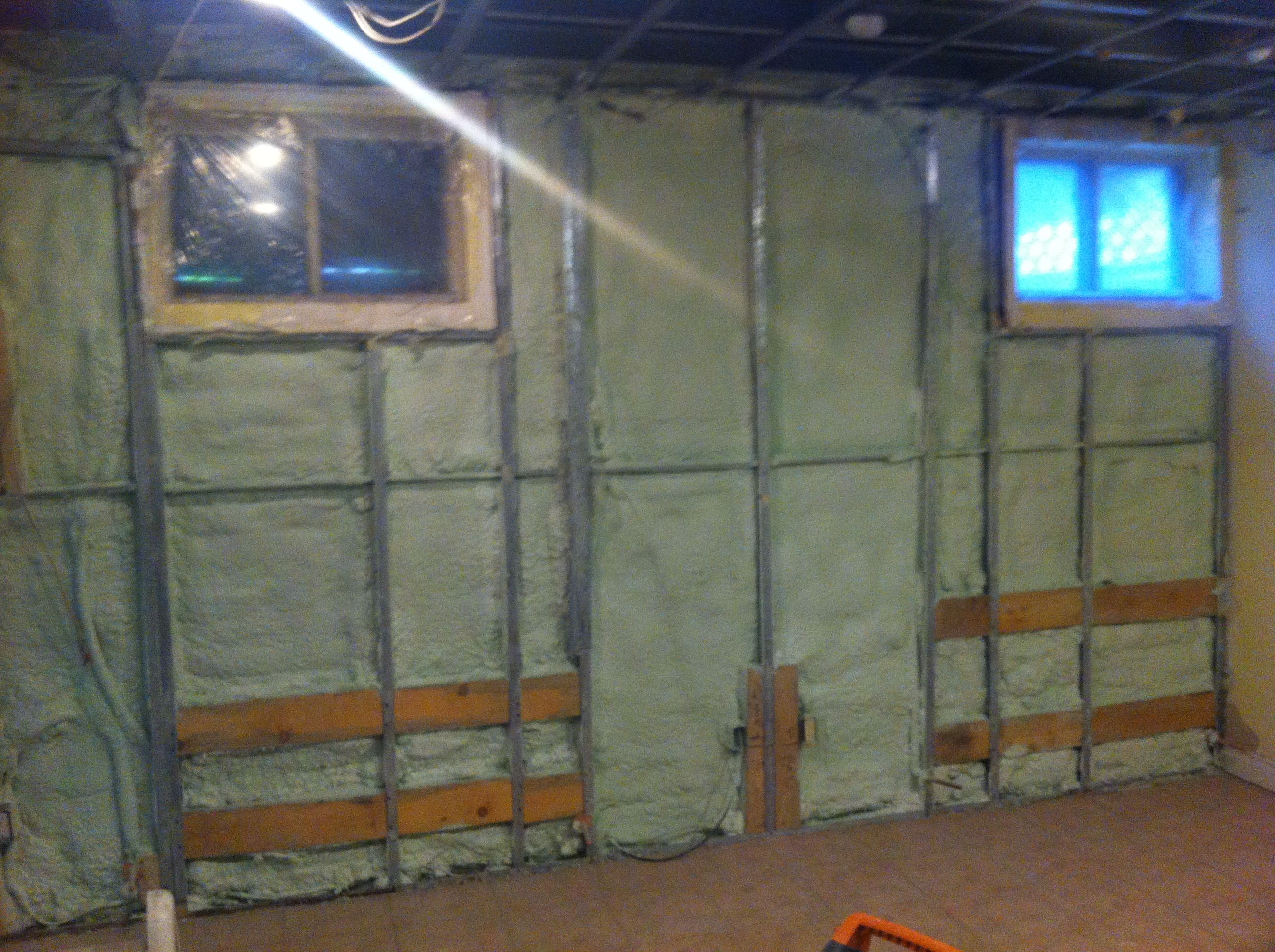
Overall, I’m pretty happy with the insulation. I would have preferred spray foam through-out, but some of the cost savings with Roxul allowed us to add interior sound insulation in the inside walls. Cindy had felt that the house had been “echo”-y, so anything to improve the density of the house is good.
